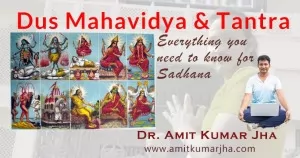Sacred Geometry of Power: Understanding the Mystery of Yantras
Explore the mystical world of Yantras, their origins, types, spiritual significance, benefits, and pujan methods. Learn how to use and care for sacred Yantras in daily life for peace, protection, and prosperity.

For centuries, sages, saints, and mystics have relied on mysterious geometric symbols called Yantras for divine connection, inner strength, and cosmic transformation. These sacred patterns are not merely artistic expressions; they are intricate tools that embody spiritual energy. Whether etched on copper plates or drawn with sandalwood paste on the floor of a temple, Yantras hold the power to change lives, environments, and inner states of being. This blog takes you on a soulful journey into the world of Yantras — their story, usage, benefits, puja methods, precautions, and how you can invite their energy into your life.
What is a Yantra?
A Yantra is a symbolic diagram, usually made of intersecting geometric shapes like triangles, circles, lotus petals, and squares. In Sanskrit, the word “Yantra” comes from the root “yam,” meaning to control or sustain, and “tra,” meaning instrument. Hence, a Yantra is a ‘tool to harness energy’. Each Yantra is associated with a specific deity or cosmic power and acts as a spiritual magnet that attracts positive vibrations and divine blessings.
The Story and Origins of Yantra
The concept of Yantra has its roots in the ancient Vedic traditions. It is said that when the gods wanted to be present among humans but couldn’t manifest their physical forms, they infused their energies into sacred symbols — the Yantras. These diagrams became living forms of divine presence. The Shri Yantra, associated with Goddess Tripura Sundari or Lalita Devi, is considered the most powerful and ancient of all Yantras. Many scriptures such as the “Shri Vidya” texts describe Yantras as visual mantras — tools for seeing what the mantra invokes.
Types of Yantras and Their Usage
- Shri Yantra: The queen of all Yantras, used for wealth, abundance, and spiritual growth.
- Kuber Yantra: Invokes the blessings of Lord Kuber, the god of wealth.
- Baglamukhi Yantra: Provides protection from enemies and stops negativity.
- Mahamrityunjaya Yantra: For healing, longevity, and protection from untimely death.
- Sudarshan Yantra: Shields from evil eye, black magic, and psychic attacks.
- Durga Yantra: For power, victory, and overcoming life’s challenges.
- Vashikaran Yantra: For attracting love or influencing others positively.
How to Use a Yantra in Daily Life
Using a Yantra is not complicated. You simply place it in a clean, sacred space and treat it with respect. Most people keep Yantras in their prayer rooms, altars, or even wallets. The power of the Yantra is activated through regular chanting of associated mantras. You may light a diya (lamp), offer flowers, and focus on the center (bindu) of the Yantra while meditating. With time, the Yantra becomes charged and begins to emit subtle spiritual vibrations.
Benefits of Yantra
- Manifestation: Helps in attracting wealth, health, love, and spiritual wisdom.
- Focus: Sharpens concentration during meditation and improves clarity of thoughts.
- Healing: Brings emotional stability and physical well-being.
- Protection: Acts as a shield against evil forces, jealousy, and negativity.
- Divine Connection: Enhances connection with specific deities or energies.
Disadvantages or Misuse of Yantra
Though Yantras are positive tools, misusing or disrespecting them can result in stagnation or mild energetic disturbances. Here are some key points:
- Keeping a Yantra without proper cleansing or puja may render it inactive.
- Using a Yantra without knowing the correct mantra or intention can delay results.
- Copying sacred Yantras casually or using them as décor without reverence is discouraged.
Precautions and Best Practices
- Always install the Yantra on a Friday or during an auspicious Tithi like Navratri, Diwali, or Guru Purnima.
- Clean it regularly with rose water or milk and gently wipe with a soft cloth.
- Chant the associated Bija mantra daily or at least every Friday.
- Never place a Yantra on the floor or near washrooms.
- Keep the Yantra in an east-facing direction for maximum effect.
Pujan Vidhi (Worship Method)
- Choose a clean and sacred place in your home.
- Place the Yantra on a red or yellow cloth.
- Light a diya and offer incense and fresh flowers.
- Chant the mantra associated with the Yantra (e.g., “Om Shreem Hreem Shreem Kamale Kamalalaye Praseed Praseed Om Shreem Hreem Shreem Om Mahalaxmyai Namah” for Shri Yantra).
- Meditate on the Bindu (central point) of the Yantra and visualize your wish being fulfilled.
How to Keep a Yantra at Home or Workplace
You can place smaller Yantras in wallets, lockers, or desks. Larger copper or gold-plated Yantras are ideal for homes and temples. It's essential to give them a respectful and energetic space. For spiritual upliftment, you may place the Yantra in the northeast direction (Ishan Kona). For wealth, use the north direction associated with Kubera. Always keep the Yantra at eye level or higher, never on the floor.
Yantras are not just diagrams; they are living energies capable of transforming your inner and outer world. They blend the precision of geometry with the devotion of the heart. With the right knowledge, mantra, and intention, these ancient tools can help you align with the universe’s abundance and protection. Remember, the true power of a Yantra lies not in the metal it's printed on, but in the devotion with which you activate it. Start with one, and let it be the gateway to your own divine evolution.
















